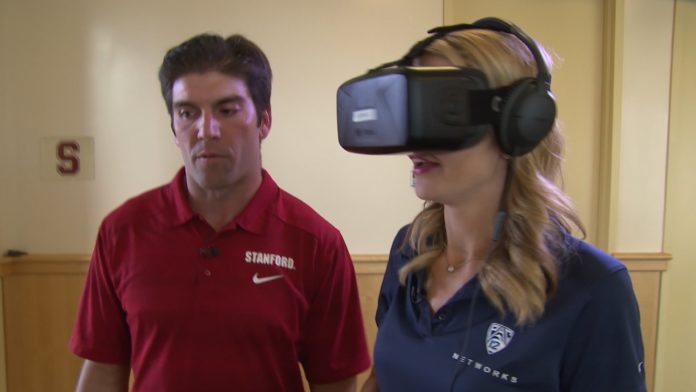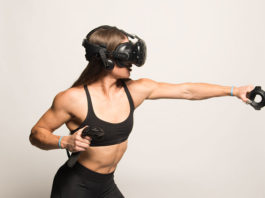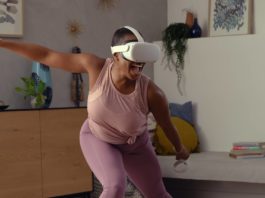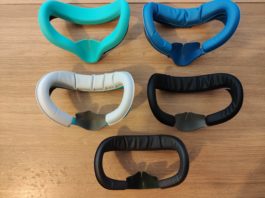Stanford is iconic in the world of VR, especially if you’re an early adopter hoping to see this technology grow. The school has piloted several advancements that go beyond the video game. Real-world effects on our health and fitness are the seeds of the future for this kind of technology. Here are just a few of the ways Stanford has pushed boundaries in VR health and fitness.
STRIVR for Stanford Football
Although we’ve covered STRIVR many times, it bears mentioning that Stanford was one of the early adopters of this technology and the associated infrastructure. They were one of the first to recognize the power that a simulation has on the mind, and how that can translate to what the body can do.
We know that simulations can improve a player’s decision-making skills. They can help them find openings they may not have noticed before, or boost confidence. Conrad Ukropina felt his confidence slipping as he replaced Stanford’s top scoring special teams kicker, Jordan Williamson. The school used STRIVR to help him visualize kicking winning field goals. Simulations showed him from any potential angle on the field. By the end of his season, he’d had a 90% make rate on his field goals.
Emotional Health and VR Fitness
VHIL is Stanford’s stated goal is understanding people’s interactions in immersive virtual reality. They study concepts like empathy in VR and seek to understand the emotional side of this technology. Before you shrug off emotion and fitness, the two are linked more than you might realize. Ever heard of passion for your workout? That’s your body’s emotional senses feeling strongly about your workout, for whatever reason.
[youtube https://www.youtube.com/watch?v=AnmGiEg4_GQ&w=560&h=315]
Research into this empathy will better inform tomorrow’s developers and today’s policymakers on shaping a better world (real and virtual). The team created the Stanford Ocean Acidification Project, a free app on Steam and Viveport, that visualizes the impact CO2 has on the oceans. VR games like Fallout tap into emotional storytelling with big-picture ideas like the nature of humanity or the value of parenthood. In the future, work in this realm will result in richer experiences built for VR from the ground up that provide emotional and physically engaging reasons to keep working out.
Stanford Radiology in VR
Hopefully, you won’t need an X-Ray anytime soon but current technology doesn’t present a full picture. Though doctors are well trained to read these X-rays, the level of depth and precision allowable in VR far surpasses current technology. This is the conclusion that Stanford scientists came to, and has become the basis for a new kind of patient education system.
[youtube https://www.youtube.com/watch?v=x9D9eIWZNgM&w=560&h=315]
If doctors needed to make an uncommon incision, or if your body complicated that process somehow, VR technology would allow surgeons to view their incision area for a kind of “forecast” of what to expect. They will be able to see the position of organs and simulate their work before performing a complicated surgery.
VR can also help surgeons devise a plan for how they want to make the incision. A micro-incision is best for minimally invasive surgeries, but not always possible for every patient. Using this kind of technology would allow surgeons to forecast the outcome of surgeries like this with far greater accuracy.
VR for Pain Diversion
Samsung is doing extensive trials for pain, but Stanford utilizes VR regularly to both educate patients and alleviate pain. Their VR simulators can show a patient three-dimensional views of the body while providing a simulation of what’s happening inside the body. VR has also become a powerful tool to help patients that don’t speak English, allowing physicians to communicate more complex ideas with visual aids.
[youtube https://www.youtube.com/watch?v=FOTGlD5HC1A&w=560&h=315]
This system can be utilized at all stages of a surgery. Education is an important tool in managing anxiety.
Stanford and VR
Stanford has made amazing progress not just creating applications for VR, but understanding how this technology works with the body and the mind. Their work shows the true progression of VR and gives a hint of the future of healthcare and fitness.VR will provide an educational and engaging experience with real-world results.




